
Are you newly diagnosed with COPD? Do not make these common mistakes, read this post to learn about what and how to avoid complications early on!
Getting diagnosed with COPD can seem overwhelming, especially when it catches you by surprise. It's often even more overwhelming to get used to all the new treatments, medications and lifestyle changes required to keep your lungs healthy, especially while you're still trying to come to terms with your diagnosis.
As a chronic disease, COPD requires constant work and careful decision-making to keep the symptoms under control. Because of this, it's no surprise that new COPD patients make a variety of mistakes that can affect their health and well-being.
Between making changes to your diet, exercise routine, medications, and many other activities of daily life, there are a lot of opportunities for error. As you adjust to life with COPD, it's important to avoid making mistakes that could serious consequences for your health, or at least catch and correct them early on.

That's why you should learn and pay attention to the mistakes that other new COPD patients tend to make. It helps you learn more about your disease, what to look out for, and how to keep your body and lungs as healthy as possible.
In this guide, we're going to help you avoid common pitfalls by showing you the mistakes that new COPD patients frequently make. Along with each mistake we've provided solutions so you'll know how to avoid that mistake and do the correct thing instead.
By taking the time to learn from others' mistakes, you'll be much less likely to encounter the same problems yourself. In the next sections, we'll give you all the information you need to avoid falling into the same pitfalls that other patients end up in.
However, it's important to remember that mistakes and struggles are inevitable as you adjust to the many changes that getting diagnosed with COPD brings. But if you educate yourself now, you can easily correct these mistakes and avoid serious problems that could permanently affect your health.
A major part of keeping your lungs healthy and keeping your COPD under control is learning everything you can about your disease. It also means being an active, motivated participant in your treatment and knowing what you shouldn't do just as much as the things you should.
The Mistake: Not Using Your Inhaler Correctly
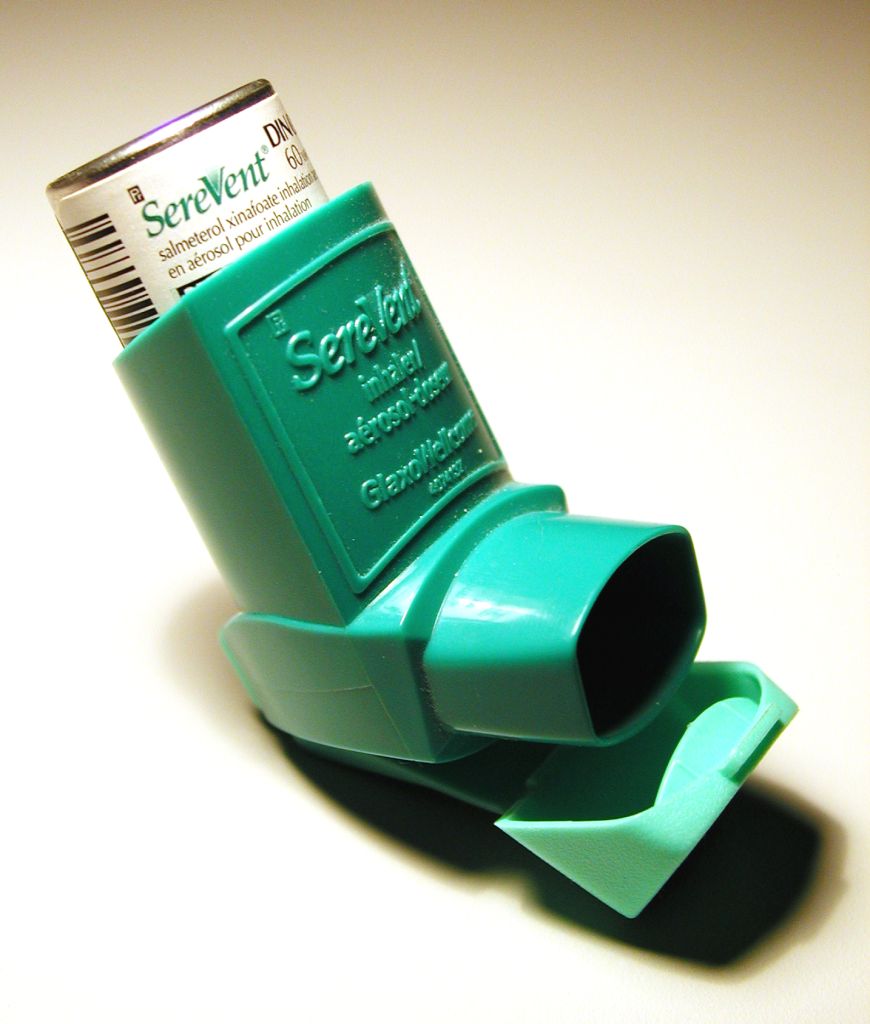
While inhalers may seem like fairly straightforward devices, a surprisingly large percentage of patients don't use their inhaler correctly. This happens to many patients who never learned the proper technique or forgot the correct steps over time. Other patients get too complacent or careless and skip steps to save time, not realizing each step is important.
Most of the mistakes patients make with their inhalers have to do with preparing the inhaler and using the right breathing technique. This is a serious problem, since these steps are necessary for getting the medication into the lungs where it needs to work.
Unfortunately, many doctors don't do their due diligence in training their patients to use their inhalers correctly. Even though doctors are supposed to check patients' inhaler technique at every appointment, it is often rare for them to take the time to do it properly in practice.
It doesn't help that many doctors don't even know proper inhaler technique themselves, meaning they can't give their patients adequate instruction. Luckily, the medical community has recently acknowledged the extent of this problem and is making efforts to raise awareness among doctors to correct it.
Here are some of the common mistakes to look out for:
- Not shaking the inhaler before each puff
- Not exhaling fully before using the inhaler
- Not holding the inhaler in the correct position
- Not timing your inhale with the spray from the inhaler
- Not inhaling deeply enough
- Not inhaling slowly enough
- Not holding your breath after inhaling the medication
- Inhaling through your nose instead of your mouth
Making any of these mistakes can result in getting too little medication or none of the medication that you need. This can be very dangerous when you suffer from COPD, because you need your full dose to prevent serious symptoms and exacerbations.
The Solution: Learning Proper Inhaler Technique
Because all inhalers are different, the only way to ensure that you're using your inhaler correctly is to re-read your inhaler's instructions and re-evaluate your technique. That means going over all the steps and guidelines in the information packet that comes with your medication.
This is important whether you're a newly diagnosed COPD patient or you have been treating your disease for some time. No matter how well you think you know it, it never hurts to double check.
You should also take your inhaler with you to every doctor's appointment so you can show your doctor exactly how you usually use it. That way, your doctor can identify any mistakes you make and show you the correct technique.
Every time you use your inhaler, make sure you follow every step and don't rush or cut any corners. Don't forget to shake or prime your inhaler if needed, and always remember to exhale before using it.
Timing your inhale with the spray from your inhaler is extremely important, but also difficult, which is why this step tends to cause patients the most problems. It may take some practice to time correctly, and you may need to use a spacer attached to the mouthpiece to help you do it right.

Studies show that when you inhale too early, then you only get about 35% of the full dose you're supposed to get. If you inhale to late, however, you end up spraying the medication in your mouth and throat instead of inhaling it into your lungs. This makes the medication ineffective and puts your lungs at risk.
To make sure you inhale at the right time and get the full dose, start breathing in slowly just before you press the button to release the medicine. Continue inhaling slowly and deeply as you feel the spray to draw the medication all the way into your lungs.
Remember that inhaling the medication isn't the last step; you still have to hold your breath to keep it in your lungs. Most recommend holding your breath for about ten seconds, then you can slowly and gently exhale.
If you are using an inhaler that contains steroid medications, then you still aren't done quite yet. To prevent the medication from drying out your mouth and throat, you need to rinse your mouth out with water before you're done.
If you ever have any questions or concerns about using your inhaler, don't hesitate to talk to your doctor. You can also ask your pharmacist to demonstrate how to use your inhaler(s) or to answer any other questions you have.
You can also find tips and information online for a variety of different types of inhalers. However, this should never be a replacement for the information you can get from your doctor and prescription information.
The Mistake: Not Knowing When to Take Which Medications
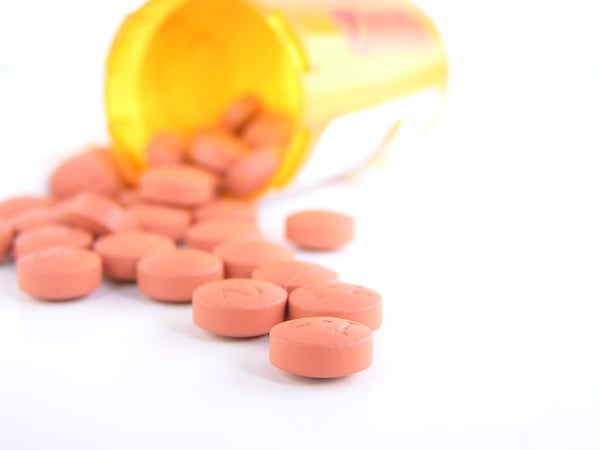
Nearly all COPD patients take two major types of medications: maintenance medications and quick-relief medications (also known as rescue medications). Both medications are delivered via inhaler, which is why patients sometimes get them confused.
This can be dangerous, because you need to use both medications correctly in order to treat your COPD effectively and keep your symptoms under control. Mixing up the two medications or forgetting to take them at the right time could make your symptoms worse or cause you to have a serious COPD exacerbation.
Other medications can be confusing to use, too, especially if you are only supposed to take them on certain occasions. For example, many doctors prescribe oral antibiotics and steroid medications for their patients to use as needed to prevent and treat COPD exacerbations.
The Solution: Following Your COPD Action Plan

Every COPD patient should get a COPD action plan from their doctor shortly after getting diagnosed. If you haven't received one yet, ask your doctor to work one up for you, as studies show that they help patients better manage COPD at home.
A COPD Action plan acts like a set of guidelines for you to follow based on how bad your symptoms are from day to day. For example, most action plans have three major “zones” that correspond to the severity of your symptoms; the first zone is for when you are feeling fine, the second for mild flare-ups, and the third for more serious symptoms and complications.
Click here to see what a sample COPD action plan looks like.
Every day, you should evaluate your symptoms to determine what “zone” to look at. Then, you simply follow the instructions in that zone for what medications and what doses you should take. Most action plans also include guidelines to let you know when its safe to exert yourself and at what point you should call your doctor when your symptoms flare up.
Because most COPD patients have several different medications to keep track of, it's extremely important to take the time to learn all of the important facts about each of your medications. That includes learning their full names, what they look like, and what you are supposed to use them for.
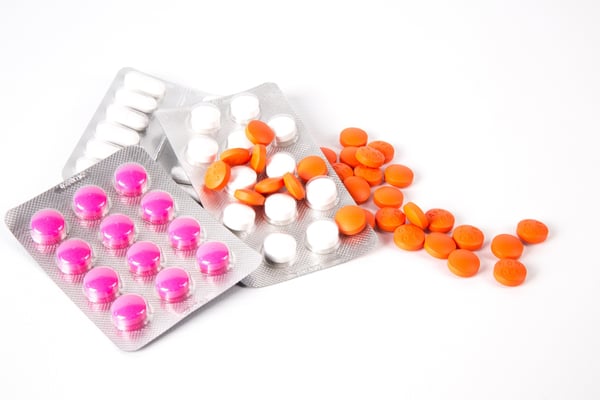
This ensures that you can match your medications with the instructions in your COPD action plan and use them exactly as your doctor directs you to. It also makes you much less likely to mix your medications up, take them at the wrong time, or forget about them altogether.
You should also bring a complete list of your medications with you anytime you go to the hospital or doctor's office. This will make it easier for the medical professionals who look after you to ensure you get the best treatment possible.
It is also important to bring this list with you whenever you travel, especially if you will be taking your medication with you on a bus, train, or airplane. You may need to present your list of medications to travel personnel, and it will come in handy if you need medical attention while you're away from your regular doctor.
The Mistake: Not Quitting Smoking
One of the most important things you can do for your health when you have COPD is to stop smoking. Unfortunately, too many patients believe it's too late for them to quit and continue to smoke even after their COPD diagnosis.
The thing is, even after you've developed COPD, there are still enormous benefits to quitting. In fact, having COPD makes it even more imperative to quit, since continuing to smoke can cause your disease to rapidly get worse.
COPD is a result of reduced lung function, often due to smoking, but continuing to smoke after COPD has set in will only harm your lungs even more. Smoking causes you to lose lung function at an accelerated rate compared to COPD patients who are able to quit.
Reduced lung function will make it even more difficult to breathe, do physical activities, and can significantly reduce your quality of life. If you quit, however, you may even see an improvement in your COPD symptoms, and you can enjoy the lung function and lifestyle you have for much longer.
While quitting smoking cannot reverse the damage that's already been done to your lungs, it can slow down the damage from getting worse. It can also increase your lifespan and reduce the number of exacerbations, flare-ups, and hospitalizations you experience because of your COPD.
Don't forget that quitting can reduce your chances for a variety of other serious health problems as well. For example, you can significantly reduce your risk for heart disease, lung cancer, and stroke if you successfully quit smoking.
The Solution: Making the Decision to Quit

It's important for every COPD patient to understand that it is never too late to quit smoking. Whether you are 25 or 65, you can improve your health and possibly even your lifespan by making the decision to quit today.
It's not an easy decision to make, and it's even harder to actually follow through. However, every year at least 350,000 smokers in the US are able to quit completely, and there's no reason why you can't be one of them.
Although quitting is hard, there are many things you can do to increase your chances of success. For example, using a quit-smoking medication or joining a quit-smoking program can make your quit attempt more likely to succeed.
When you make the decision to quit, remember that you are not alone and there are many ways to get support. First, you should talk to your doctor to see what kinds of medications and support programs are available to help you.
You may want to try nicotine replacement therapy, which is proven to increase smoking cessation rates. There are many different forms available, too, including nicotine gum, skin patches, tablets, oral sprays, and inhalers.
For more information on how to quit smoking, visit the CDC's website for a variety of helpful links and resources. You can also find helpful quit-smoking tips from the American Lung Association's website or from smokefree.gov.
Don't be discouraged if your first, second, or even tenth attempt to quit smoking ends up failing. It takes most smokers at least six attempts to quit smoking, and sometimes up to twenty, before they are able to quit long-term.
As the CDC puts it, “Quitting smoking is a marathon, not a sprint,” and you have to be in it for the long term if you truly want to live smoke free. Even though it is a long and difficult process, it is more than worth the benefits you will receive through improved health, reduced COPD symptoms, and your overall quality of life.
The Mistake: Not Eating a COPD-Healthy Diet

In order to keep your lungs and the rest of your body strong, you need to feed them the nutrients they need. That means eating a healthy, balanced diet every day to give your body fuel to work as efficiently as possible.
Unfortunately, many new patients find that controlling their weight and eating healthy foods is difficult with COPD. The disease can make it difficult to exercise and prepare healthy meals, both of which are vital for a healthy lifestyle.
COPD can make it difficult to lose weight and difficult to gain weight, which is why some patients struggle with being underweight while others struggle with obesity. Either situation is bad for your health and can make it more difficult to breathe.
If you get too few calories and nutrients, then your lungs won't have enough fuel to keep up with your body's needs. However, eating too much and gaining weight puts extra strain on your muscles and lungs, which can also make your COPD symptoms worse.

Also, because COPD makes your lungs less efficient, it means they have to work harder than healthy lungs in order to get enough oxygen to your body. This means that COPD patients need more calories and more nutrients to fuel the needs of their lungs and breathing muscles.
Another danger that many new COPD are unaware of is eating a diet that's too high in carbohydrates. Carbohydrates actually put extra strain on your lungs when digested, because they release large amounts of CO2 that then has to be processed through your lungs.
The Solution: Eating Whole Foods and Balanced Meals

Staying healthy with COPD requires a variety of lifestyle changes, including changes to your diet and eating habits. While this is never an easy thing to do, it can make a huge difference in your mood, your symptoms, and your overall physical well-being.
It helps to work with your doctor or a licensed dietitian to develop a nutrition plan that works for you. However, it is certainly possible to manage a healthy diet on your own by simply eating a balanced diet.
A healthy diet is one that's full of whole foods, which generally means foods made by starting with raw, unprocessed ingredients. These include whole grains, fresh fruits and vegetables, and lean, unprocessed meats like poultry and fish.
To avoid putting extra strain on your lungs, you should also try to limit the amount of carbohydrates you eat to the minimum healthy amount. That means avoiding processed grains, sugary foods, and processed snacks like crackers and chips.
If you want more information on eating a COPD-healthy diet, take a look at any of the several comprehensive guides we've created to help you out:
The Mistake: Not Getting Enough Exercise
It is common for COPD patients to avoid physical activities because it makes it more difficult to breathe. This causes a vicious cycle of inactivity, where the less exercise you get, the weaker your lungs and breathing muscles become, which in turn makes physical activity even more and more difficult to bear.
It doesn't help that COPD can cause fatigue, coughing, depression, and other symptoms that make it difficult to live an active lifestyle. Some patients give up on exercise altogether, which is devastating to their health.
Living a sedentary lifestyle will only end up making your COPD symptoms worse and can even make the disease progress more rapidly. It can also cause you to gain weight, lose mobility, and raise your risk for heart disease and a variety of other COPD complications.
Studies show that COPD patients who exercise and stay active are less likely to experience exacerbations, hospitalizations, and may even live longer than those who don't. That's why it's so important to work through your symptoms and find ways to stay active in spite of your disease.
The Solution: Stick With an Exercise Plan

Even though it may make you feel short of breath, exercise is healthy for your lungs and your overall well-being. It also helps you maintain a healthy weight and keep your physical mobility as you age.
If you have been diagnosed with COPD, then making the decision to stay active is one of the best things you can do for your health. To help keep you on track, work with your doctor to come up with an exercise plan that is realistic and sufficient for you.
If you find yourself struggling for any reason, never be afraid to talk to your doctor or ask for help and advice. If you're finding exercise too difficult because of your symptoms, ask your doctor about attending a pulmonary rehabilitation class, where you can learn how to better manage all kinds of physical challenges that come with COPD.
By keeping up with your exercise plan, you can keep your body toned, your breathing muscles strong, and live a much better quality of life with COPD.
If you need some help getting started, check out the following guides. They contain a variety of practical tips and tricks you can use today to make exercise easier with COPD.
- Home Exercises for COPD
- How Pulmonary Rehabilitation Can Help You Master Exercise with COPD
- Breathing Techniques and Exercises to Help You Manage Your Breathing
The Mistake: Not Conserving Energy

When you have COPD, you have to adjust to certain physical limitations. You will find that, over time, the disease makes many activities that you are used to doing more difficult by making you feel breathless and run down.
Many patients get frustrated when tasks that used to be easy become a struggle, triggering their COPD symptoms and sapping their energy. This can cause significant anxiety, depression, and cause some patients to give up on hobbies and physical activities they enjoy.
However, these problems can be managed by pacing yourself and learning how to better manage your limited energy reserves. Unfortunately, new patients who are still coming to terms with their limitations often deplete their energy quickly during the day, which causes them to live their lives feeling ever breathless and fatigued.
This can be incredibly disheartening for new COPD patients who haven't got the hang of managing their disease. However, by recognizing your limitations and working with them instead of against them, you can find many solutions for conserving energy throughout the day.
The Solution: Pacing Yourself
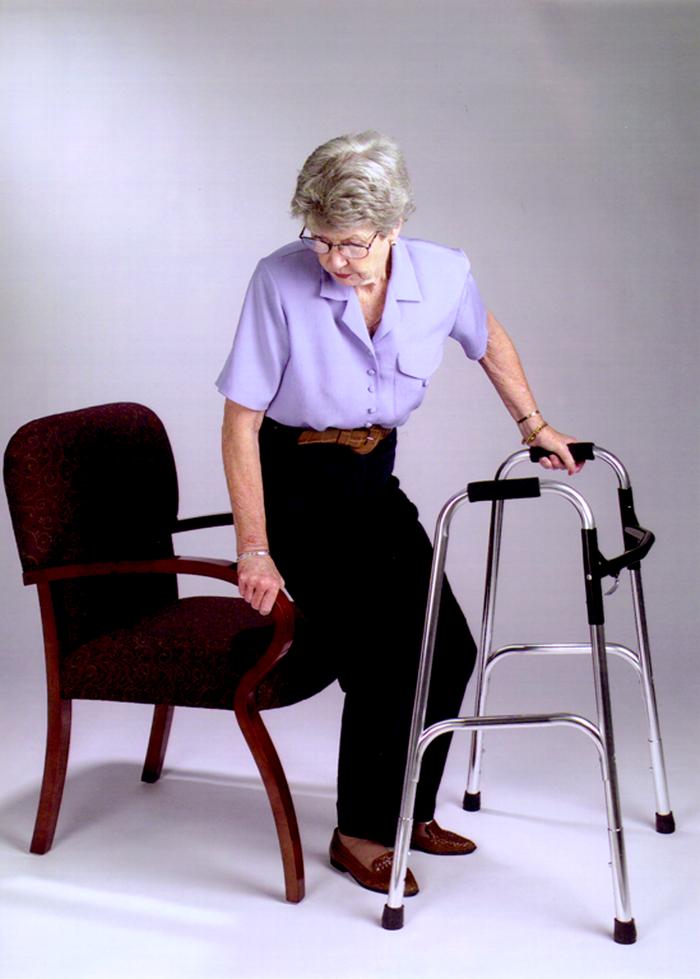
While staying active and getting exercise is vitally important for staying healthy with COPD, it's just as important to pace yourself and not push yourself too hard. That way, you can spend your energy on the things you enjoy instead of using it all up on daily tasks.
You can start by taking some time to list all of your weekly tasks, responsibilities, and components of your daily routine that tend to tire you out. Then, start brainstorming solutions that will reduce the amount of walking, lifting, bending, and other tiresome movements you have to make.
For example, try to do more tasks while sitting down and keep tall stools in strategic places around your home. If you can, hire cleaners or recruit friends and family to help you with the more physically demanding tasks.
When you exercise, make sure to take breaks whenever you feel too breathless or fatigued. Don't be afraid to take things slow and move at your own pace when you do any kind of physical activity.

It is also important to spread out your daily tasks so you don't have to do too much at once. Trying to do too much at one time will only sap all your energy for the rest of the day.
Try to split your chores between the morning and evening and split up larger tasks into smaller chunks that you can do one by one. Make sure to take breaks between physically demanding tasks and take time to rest and relax during the day.
By conserving your energy for the things that matter, it will be easier to focus on exercise, hobbies, and social activities you enjoy. You'll spend less energy on chores and boring tasks and have more leftover for the fun and meaningful things in life.
The Mistake: Using Oxygen Therapy Too Little or Too Much

When prescribing supplemental oxygen to COPD patients, doctors have to strike a careful balance between giving you too much or too little oxygen. Doctors base your oxygen prescription on a variety of factors, including your lung function, blood oxygen levels, and the severity of your COPD symptoms.
It's important to get the prescription right and to use your oxygen as directed, otherwise you could upset that careful balance. Too little oxygen can make it difficult to breathe and worsen your COPD symptoms, while too much oxygen can cause too much CO2 to build up in your bloodstream, which also makes it difficult to breathe.
However, some COPD patients don't use their oxygen as directed, which puts their health at risk. Because it is too uncomfortable, inconvenient, or because they simply don't understand their prescription, too many patients don't use their oxygen as often as they should.
The Solution: Follow Your Doctor's Instructions and Get Evaluated Frequently

As long as you follow your doctor's advice and use your oxygen only as instructed, you shouldn't have any problems with your oxygen therapy. That means always using it when you're supposed to, even if it is inconvenient or uncomfortable.
That might mean re-learning how to exercise and do other tasks while hooked up to your oxygen machine. It may also mean experimenting with different equipment, such as getting an oxygen concentrator or a new oxygen mask or nasal cannula to make using oxygen more comfortable.
It's also important to check in with your doctor regularly to have your lung function and blood oxygen levels evaluated. These tests will tell your doctor if your oxygen therapy is working and if any adjustments to your prescription need to be made.
If you are using oxygen on an as-needed basis, it can help to get a personal pulse oximeter for your home. This is a small, simple device that can read your blood oxygen levels by shining a laser through your skin.

Your pulse oximeter can tell you if your oxygen saturation is getting too low, which is a sign that you need to use supplemental oxygen. It can also help you identify exacerbations or medical emergencies more quickly by telling you if your blood oxygen saturation drops too low.
If you are ever having trouble using your oxygen therapy or find it too uncomfortable to use, don't hesitate to talk to your doctor. There are many ways to make oxygen therapy more bearable, and your doctor can help you find solutions to make your oxygen easier to use.
The Mistake: Avoiding Vaccination and Getting Sick
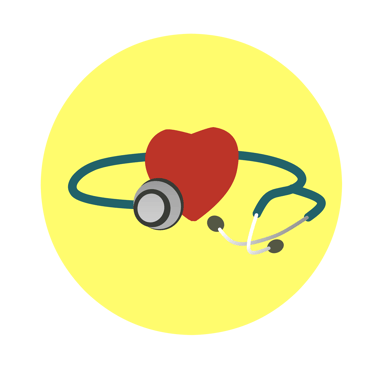
Living with a chronic disease like COPD puts you at risk for a variety of different illnesses. It also makes getting sick more dangerous, because even minor illnesses can cause exacerbations and permanent worsening of COPD symptoms.
Because COPD elevates inflammation in your lungs, it makes them more susceptible to respiratory illnesses and infections. It also elevates inflammation throughout the rest of your body, which suppresses your immune system and makes you more vulnerable to disease.
That's why it's so important to protect yourself from getting sick in whatever way you can. That especially includes getting vaccinated to ward off unnecessary disease.
The Solution: Get All Recommended Vaccinations
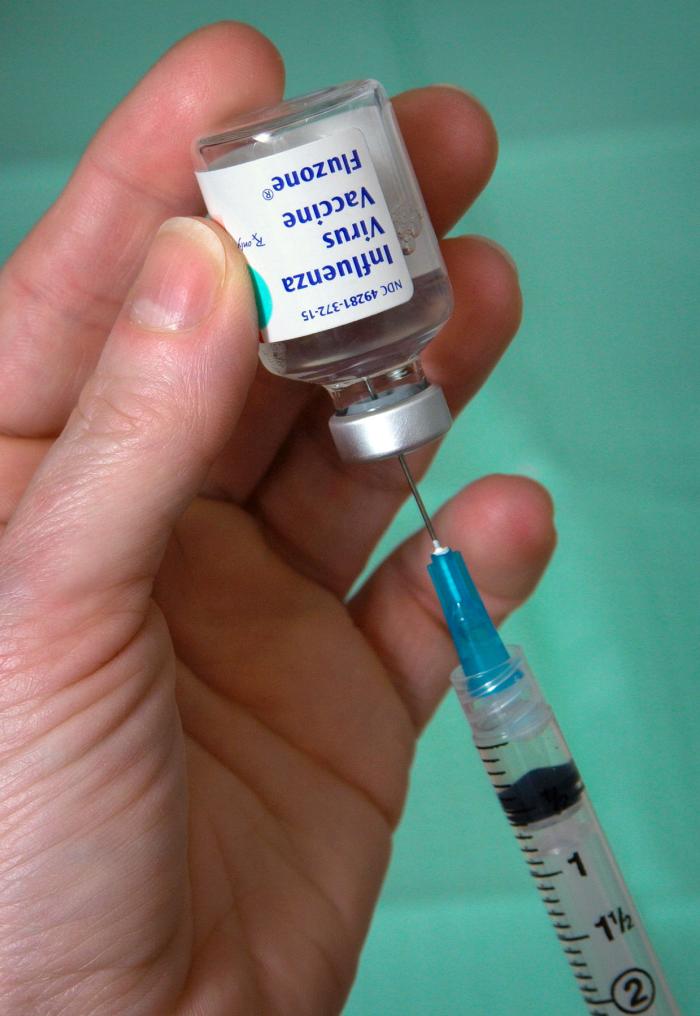
It should also go without saying that you should be up to date with all your childhood vaccinations and other recommended vaccines. If you have not completed them all, talk to your doctor about putting together a vaccination schedule to get you back on track.
Doctors also recommend that all COPD patients get yearly influenza vaccinations to reduce their chances of getting the flu. While it's often only a mild illness in healthy adults, influenza is particularly dangerous for people with chronic diseases like COPD.
Patients should also get their pneumoccocal vaccination, which is recommended for smokers and adults over the age of 65. This vaccine protects against several types of pneumonia, an illness that is especially deadly for people with COPD.
Studies show that COPD patients are six times more likely to get pneumonia than other healthy adults, making this a particularly important vaccine. For more information on COPD and vaccinations, check out this guide from the CDC.
The Mistake: Not Taking Care to Avoid Respiratory Irritants

Many people who are recently diagnosed with COPD don't yet realize how damaging minor respiratory irritants can be to their lungs. They don't understand how important actively avoiding airborne irritants like like dust, mold, air pollution, and other harmful particles is for managing their COPD.
The effects of these respiratory irritants are easy to underestimate, especially since they are not usually a problem for people with healthy lungs. But if you are affected by COPD, these irritants can wreak havoc in your respiratory system, causing serious inflammation in your lungs and airways.
This can make your symptoms much worse in the short term, triggering coughing, wheezing, and making it more difficult to breathe. It can also increase your risk for COPD exacerbations in the future, especially if your lungs are exposed to any of these irritants regularly.
That's why people with COPD need to go to extra lengths to protect their lungs from harmful particles in their environment. That means keeping their homes and workplaces clean and free from irritating particles and being careful to avoid air pollution and allergens outdoors.
The Solution: Take Active Measures to Avoid and Eliminate Respiratory Irritants

If you have COPD, it's important to make sure that any environment you spend time in is irritant-free and lung-friendly. Otherwise, you risk worsened breathing problems or even triggering a COPD exacerbation.
For outdoor irritants, you can avoid them by paying close attention to your local weather, allergen, and air pollution forecasts. When pollution or allergens are high, you should try to stay indoors and avoid spending any extended periods of time outside.
However, it's just as important, if not more important, to get rid of respiratory irritants inside your home. This includes cleaning up dust, pet dander, mold, and not using fragrances or cleaning products that could irritate your lungs.
It is also important to protect your lungs in the workplace, especially if you work in a field that deals with agriculture, construction, manufacturing, or food, mineral, or chemical processing. If you must work around harmful chemicals, dust or fumes, make sure to wear a certified particle mask or respirator.
If you want more information, we've published several articles on this blog about how to protect your lungs from both outdoor and indoor irritants. Check out the following links for a multitude of practical tips and tricks for keeping your lungs healthy and safe from inflammatory particles.
- How to Manage Allergies and COPD
- How to Protect Your Lungs for Respiratory Irritants in Your Home
- How to Manage Your COPD Symptoms in the Summer
The Mistake: Not Taking Your Psychological Health Seriously

Living with a chronic disease like COPD takes a toll on your mental health. The diagnosis itself can be heartbreaking, and the following tests, treatments, and lifestyle changes can be overwhelming, too.
Many patients find that dealing with the emotional and mental strain of living with COPD is too difficult to do all alone. When this happens, it's important to seek outside help.
If not properly treated, COPD-related emotional distress can quickly turn into a serious anxiety disorder or depression. In fact, studies show that people with COPD have a significantly increased chance of depression and other mood disorders.
The Solution: Look After Your Mental Well-being
Getting diagnosed with COPD can be traumatic, and the daily struggles of managing the disease can wear on your mind over time. However, if you have emotional support, the burden of living with a chronic disease can be significantly easier to bear.
Don't be afraid to ask for help if you are struggling with COPD-related anxiety or depression, or simply have trouble coping with emotional impact of living with a chronic disease. The majority of COPD patients need to rely on friends, family, and mental health professionals to get them through these trying times.
It's also important to give yourself time to think and reflect on your feelings. If you jump back into the bustle of daily life without taking time to process your diagnosis, you have a recipe for mental disaster.
To keep yourself calm and sane, you also have to take self-care seriously. That means carving out time to relax, have fun, and do hobbies and activities you enjoy.
However, it's important to remember that you don't have to deal with the hardships caused by COPD on your own. Even just talking out your worries and struggles with a psychological therapist can make a major difference in how you feel.
Working with a mental health professional can help you learn to cope with anxiety and sadness and come to terms with living with COPD. If you have a more serious condition like severe anxiety or depression, a psychiatrist can provide you with medication and counseling that can help improve your symptoms.
To learn more about anxiety, depression, and COPD, check out these more in-depth guides.
The Mistake: Not Understanding Your Health Insurance
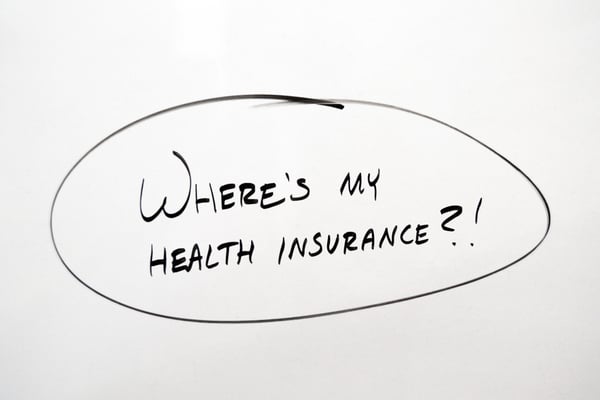
In order to manage their disease effectively, COPD patients have to get many expensive treatments. Between medications, doctors visits, medical equipment, hospitalizations, and important physical and psychological therapies, living with COPD can rack up quite a medical bill.
That's why it's vital to not only have health insurance, but also thoroughly understand your plan. Even if you have great coverage, you may need to go to special lengths to ensure that it kicks in when you need it.
It's not unusual for patients to receive large hospital bills for going to an emergency room that's not within their insurance network. Even if you are careful to go to a hospital that is in network, certain doctors and specialists at that hospital might not be covered by your insurance.
This is an unfortunate problem that catches many patients by surprise and saddles them with enormous amounts of medical debt. To protect yourself from the same fate, you need to go out of your way to make sure that you know exactly how your health insurance works.
The Solution: Familiarize Yourself with Your Insurance Coverage and In-Network Physicians

One of the most important parts of making sure your healthcare costs are covered is knowing what kinds of procedures your health insurance covers. It's also important to know what hospitals, medical clinics, and urgent care centers are “in-network,” or fully covered under your plan.
Unfortunately, hospitals and doctor's offices do not always give accurate answers about what doctors and procedures your insurance will cover. That's why it's best to double-check what anyone else tells you, which requires that you have a firm understanding of your insurance.
The best way to ensure that your medical costs will be covered is to talk to your insurance company directly. Whenever possible, take the time to call your insurance company to verify that your medications, procedures, medical equipment, and visits with doctors and specialists are covered.
You should also make a list of hospitals and clinics in your local area that are covered by your insurance. If you do this ahead of time, you and your loved ones will know exactly where you should go if you have an emergency or need urgent care.
Whenever you have a medical emergency or a new medical cost, make sure to contact your insurance company as soon as possible to let them know. By getting in touch with them early on, you can make sure that you are getting covered and potentially avoid certain problems and complications.
Knowing the ins and outs of your insurance plan will also allow you to take full advantage of the services they cover. For example, many insurance plans offer a certain amount of paid physical therapy or mental health services, both of which you may want to utilize over the course of treating your disease.
Insurance can be a difficult, confusing, and frustrating process to navigate, but it's a necessary part of living with a chronic disease. The more informed and proactive you are, the fewer problems and unexpected costs you will have to deal with.
The Mistake: Not Asking for Help
COPD is an extremely difficult to disease to manage on your own. As the disease progresses and your symptoms get worse, you will inevitably find that certain activities become more difficult to do.
There will come a time when you realize that you just can't manage to take care of as much as you used to. While this can be difficult to come to terms with, it is much easier if you have people around to help you out and support you.
Unfortunately, many COPD patients feel isolated and are too afraid to ask for help. Some are just too embarrassed, too depressed, or too worried about being a burden to those around them.
Because of this, some patients wait too long to a for help, putting it off until responsibilities have piled up or their life has fallen apart. They fall behind in work, exercise, house cleaning, and neglect other things that can have an impact on their COPD symptoms and overall health.
Carrying on with daily life when you suffer from COPD symptoms is difficult, and you cannot carry the entire burden on your own. The earlier you ask for help, the better you will be able to cope with your disease and continue looking after your health.
The Solution: Utilizing All the Help You Can Get

As soon as you get diagnosed with COPD, you should rally all of the help you can get. Talk to your family and friends about the difficulties you will face and what kinds of support you may need.
You are likely to find that loved ones are happy to support you. However, the only way to utilize that help is to make sure you actually ask for it when you really need it.
That means recognizing things you struggle with and coming up with concrete ways that others can help. For example, you may need help with cooking, cleaning, or getting rides to doctor's appointments; whatever it is, make sure you are clear about exactly what kind of help you need.
If you live alone, you may want to ask family and friends to call regularly to check up on you and make sure you are okay. That can give you peace of mind and an outlet to ask for help with other things when you need it.
Asking for help may also include hiring services to take care of responsibilities that have become too difficult for you. For example, hiring a house cleaner, handyman, or having your groceries delivered to your door can take a huge burden off of you and free up time and energy to put toward other things that matter to you and your health.
The Mistake: Not Getting Your Symptoms Diagnosed
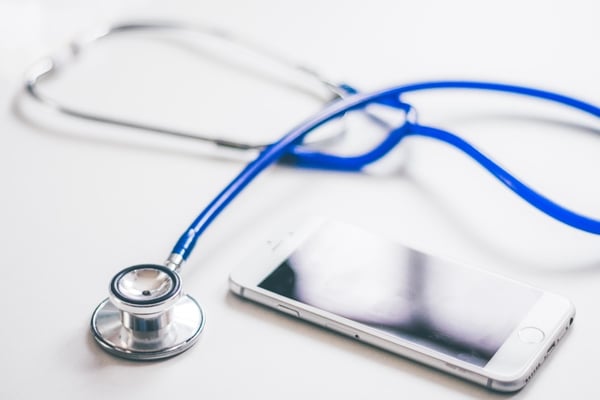
Possibly the worst mistake that an early-stage COPD patient can make is not getting diagnosed. COPD is a notoriously under-diagnosed disease, often because patients ignore their symptoms until they get too severe to brush off.
Unfortunately, by the time symptoms become that severe, the disease has advanced to a more serious stage. And, because COPD cannot be cured, their lungs have sustained permanent damage in that time that cannot be reversed.
However, if you get diagnosed early, the medications and other treatments you receive can slow down the progression of the disease. That allows you to live a better quality of life for longer, instead of experiencing a more rapid lung function decline.
Once you know you have COPD, you can begin taking action and making lifestyle changes that will keep your body healthy and strong for as long as possible. If you don't get diagnosed and treated, however, you will lose more lung function and may continue doing things (like smoking) that put your lungs at risk.
The Solution: Don't Ignore COPD Symptoms
Because COPD usually shows up late in life, many people avoid seeing their doctor for COPD symptoms because they think they are natural symptoms of aging. However, experiencing a chronic cough, wheezing, and shortness of breath are not natural and are not normal signs of aging.
These symptoms are, however, a sign that you may have a serious breathing disorder like COPD. If you or a loved one experiences these symptoms regularly and they don't go away, you should see your doctor for an evaluation right away.
Unfortunately, in the earliest stages of COPD, symptoms are often very mild. Because of this, they are easily missed or mistaken, which is why it's so important to know how to recognize the early symptoms.
You should be especially watchful of COPD symptoms if you have any of the risk factors for COPD, including asthma or a history of tobacco use. You may also have a higher chance of developing the disease if you have worked anywhere where you were regularly exposed to smoke, dust, or harmful fumes in the workplace.

Here is a list of some of the early warning signs for COPD you should learn to recognize:
- Shortness of breath (especially at rest or during light physical activity)
- Changes in your mucus (changes in color or consistency)
- Chronic cough (especially a cough that brings up phlegm)
- Tight feeling in chest
- Morning headaches
- Difficulty sleeping
- Fatigue
- Weight loss
One of the most telltale symptoms of COPD is experiencing shortness of breath when you are at rest or only doing light activities. This symptom may also be a sign of cardiovascular problems, which may or may not be related to COPD.
Either way, these are symptoms that should never be ignored and always be evaluated by a doctor. Even though it can be stressful or scary, it's better to know sooner than later that you have a chronic disease.
The Mistake: Not Taking Your Diagnosis Seriously

The worst thing you can do after getting diagnosed with COPD is... nothing. Unfortunately, some patients simply make no changes to their life even after learning that they have the disease.
Some patients are simply overwhelmed by the diagnosis or are in denial about the state of their health. Some are simply uninformed, disheartened, or don't understand the severity of their disease.
In other cases, patients find it hard to juggle their work life, personal life, and all of the things they need to do to keep their COPD under control. They let life get in the way of important habits, lifestyle changes, and treatments, and push their physical health to the sidelines.
Unfortunately, if you don't take serious action to treat COPD, your health and your breathing problems will get worse much more quickly. By not complying with treatment or making important lifestyle changes, patients experience worse symptoms, reduced lung function, and even quicker progression of their disease.
That's why it's important for COPD patients to understand from the beginning that COPD is a serious, chronic, and life-threatening disease. Even though the symptoms often start out mild, they can quickly and suddenly get worse, especially in the absence of healthy habits and proper treatment.
The Solution: Taking an Active Role in Your Health and COPD Treatment
If you want to maintain your current quality of life for as long as possible, you have to be motivated and proactive in treating your disease. The lung damage caused by COPD is irreversible; if you don't protect your lungs and the function they have now, you will never be able to get it back.
It is possible to keep your symptoms under control and slow your disease's progression, but only if you take an active role in your treatment. That means going to doctor's appointments, taking your medication, and making healthy lifestyle choices that keep your body strong.
It also means avoiding all of the mistakes we've discussed in this article, which requires taking a serious and active role in your health. It also requires you to learn all you can about your disease and what you need to do to protect your lungs from harm.
Another part of being involved in your COPD treatment is not being afraid to ask lots of questions. Inevitably, there will be plenty of times when you don't fully understand a medication, treatment option, or aspects of your health or the disease itself.
When this happens, don't keep it to yourself; ask any and all of the questions you have to the doctors, pharmacists, and specialists you see. Also, don't be afraid to ask them for advice about how to exercise, live healthfully, manage your disease, or make COPD treatments like oxygen therapy more comfortable.
COPD is a complex disease that requires a comprehensive, intensive approach to manage. Both doctors and patients need to work together and be on the same page in order to keep the disease under control.
Even when life gets busy, it's not worth sacrificing your health to keep up with a fast-paced lifestyle. You may even need to give up some activities and responsibilities in order to free up time and energy to focus on your health and other things that matter to you in life.
Most of the solutions we've discussed in this guide can be achieved by educating yourself, working with your doctor, and making careful, healthy choices in your everyday life. While it's not an easy thing to do, the benefits to your health and well-being are more than worth the effort it takes.
Conclusion
Living with COPD is difficult, and figuring out how to treat it effectively can be a long and challenging process. But by carefully following the advice of your doctor and other health experts, you can rest assured that you're doing everything you can to keep your lungs and body strong.
Now that you know the most common mistakes that new patients make, you'll be one step ahead of most as you embark on your journey to stay healthy with COPD. You will not only know what mistakes to avoid, but you'll have a variety of tips and techniques to pull from if you ever find yourself in doubt.
The best way to live a long, fulfilling life with COPD is to make the effort every day to make healthy choices and build on healthy habits. Whether in the kitchen, outside your home, or in your daily routine, always put your lungs' and your body's well-being first.


.png)





